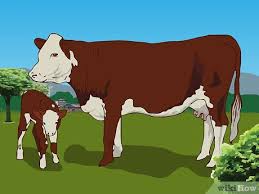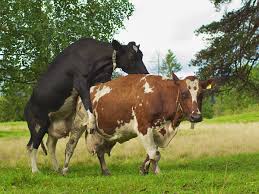If you are to raise ruminants for production, it largely depends on the amount you have at hand and the available space you have to use as that is exactly what determines the number with which you can start with.
However, a male (1) ruminant will conveniently service ten (10) females. So, as for the ratio I will like to recommend a ratio of 1male to 10 females.
Now let us discuss about the general breeding management procedures to observe:
General Ruminants Breeding Management
- The male female ruminants ratio is 1:20.
- Young ruminants males can be put in to experienced older ewes and older rams to younger ewes will help in better mating.
- Inbreeding should be avoided.
- The males should be replaced or exchanged once in two years to avoid inbreeding.
- Breeding ewe of indigenous breeds should be 18to 24 months depending upon their body condition.
- Breeding too young ewes result in more weakling and thus results in higher lamb loss.
- Body weight of ewe at breeding should normally be less than the adult body weight of that breed.
- Oestrous detection of all female goats above 1 year should be done either with approned or vasectomized buck both in morning or evening during breeding season.
- The normal breeding season is Sept to Oct, Feb to March and May to June.
- In order to synchronize them improved hormonal technology may be used or buck may be in a partitioned corral of woven-wire net so that the does and the buck may have full view of each other. This may be done a week or two before or during the breeding season.
- A 90% conception rate in does may be ensured if one buck with one doe or more does (not exceeding 2 to 3) in heat are allowed to remain together for a whole day or whole night provided it is followed over period of 3 cycles.
- If 2 services at an interval of 8 to 12 hrs is practised, improvement in conception may be achieved.
- Goats which do not return to oestrus after 2 cycles are considered as pregnant and should be separated from the dry, non pregnant flock. They should be kept in a group of not more than 15 to 20 does to avoid infighting.
- If they have no kidding for complete one, year they should be removed from flock.
- Efforts should always be made to avoid kidding during the peak winter season which can be practically achieved by a planned breeding avoiding summer season within a specified period between 15th may to 15th June. This will save the kids from cold susceptibility and resultant pneumonic death during winter.
- Avoid starvation of goat since even two days starvation period early in pregnancy can cause a high percentage of shed embryos to be absorbed.
Read Also: Methods of Genetic Improvement in Livestock Breeding
Managemental Methods to Optimize Ruminants Breeding

Oestrous stimulation
- It is the practice of stimulating and synchronizing breeding by putting vasectomized males with females about 10 days to 2 weeks prior to the beginning of breeding.
- As a result of this, large portion of the ewes will ovulate and conceive during the early part of the breeding season.
Oestrous synchronization
- Oestrous cycle of the ewe/doe is synchronized so that large numbers of them come in heat at one time.
- This would help in reducing the cost of artificial insemination or natural breeding and subsequent care at lambing/ kidding.
- It gives uniform flocks of lambs/ kids, which will facilitate the disposal and fetch more prices.
Ram/ buck effect
- Sudden introduction of ram / buck in the ewes/ doesflock after prolonged separation bring more number of ewes/ does into oestrous.
Telescoping
- Introducing ram in the flock after keeping it away for 2 to 3 months
- Sudden introduction of ram into the ewes flock will bring 70 to 80 % of ewes in heat in the first oestrous cycle.
- the above technique can also be applied to goats
Hormonal method
- Administration of progesterone hormones or their analogues through feed, as implant or as impregnated vaginal sponges. After the administration for 14 days the hormone is withdrawn. The animal comes to heat within 3 days.
- Administration of two intra muscular injections of Prostaglandin F2 alpha or its synthetic analogues 10 mg each at an interval of 10 days bring all the animals in heat within 72 to 96 hrs.
Related: Anatomy of Fishes: Female Fish and their Reproductive Strategies

